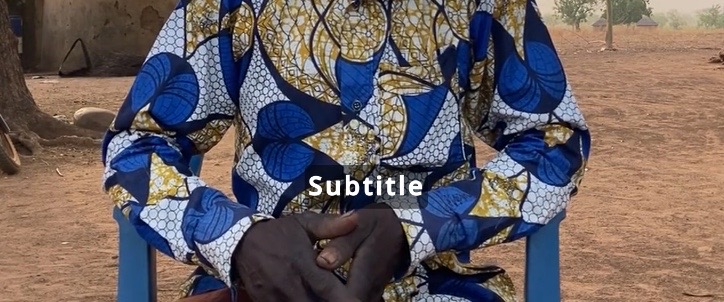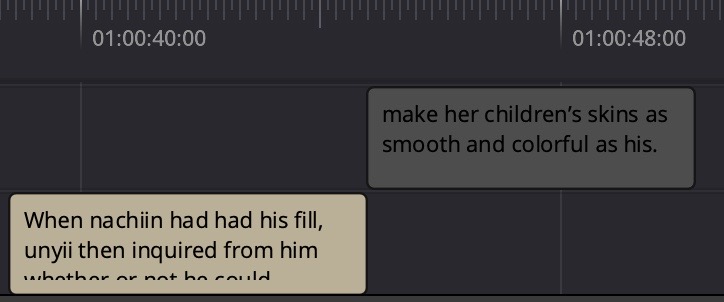When reading folktales that have rarely been written down before, it is important to keep their origin in mind. Konkomba folktales have been passed on orally for a long time and have only recently been written down and translated from Likpakpaln into English. Storytelling in the Konkomba’s culture takes place in a very specific way that is essential to them, a storyteller tells the tales to a group, with which he interacts throughout the process in a theatrical way, and often audience participation is what makes the story complete. The questions they ask or the things they say make the storyteller tell the story in its entirety. These interactions can be seen in videos of the storytelling sessions. Many of the folktales have been written down and recorded by Tasun Tidorchibe, who worked on this project with us and provided the material, such as videos and documents of the stories. This project will help to make the folktales more accessible. The storyteller incorporates a lot of emotion and expressive body language into his session, which gives the viewer an insight into the story’s highs and lows. This performative element of the storytelling helps us understand the people even though we don’t speak the language. Therefore, when the storyteller or the audience laugh or show other emotions in reaction to the narrative, their interpretation becomes more obvious to us. When reading the story in English, there will be some words that can not be translated, but a glossary and footnotes will hold explanations for Likpakpaln terms. This will be incorporated in our TEI document, that Nadine Hoffmann is working on. Nadine has also summarized the story in her blog. Because the storyteller in the video of “Nachiin Pays for Feasting on Unyii’s Children” tells the original story, translation and subtitles are a way of following the session and understanding it at the same time. His name is Bilinyi Chikpaab and the video was recorded on the 18th of march 2022 in Kutol. The story told is called “Nachiin Pays for Feasting on Unyii’s Children” and includes multiple characters, such as a wolf, a rabbit and a crocodile.
When creating subtitles it is important that the text is timestamped so it is accurate to the video. Tasun Tidorchibe has timestamped the tale for this video. The subtitles have to be on the screen in time and long enough to be read fully. In addition to that, they also have to be in a style that makes them clearly readable. This can easily be achieved by creating a background for the text that sets the words apart from the background. What I did in this case, is make the background transparent, so that the background isn’t lost. The font should also be as simple as possible, so that it is not distracting. I chose Open Sans Semi Bold and made the font size 48.

There is a lot to see in the video and the subtitles shouldn’t compromise the storyteller’s presence. A block of subtitles should not be more than two lines of text. For example: The text at 00:02:55:05 to 00:03:15:05 and 00:06:30:00 to 00:06:37:00 had to be split up according to that rule. I started making a list of text that had to be split, looked at the words and then decided where to split the sentence, so it wouldn’t be too disruptive. There were 20 blocks in total, that had to be split. The subtitles in the program are numbered in accordance with those on my list and the timestamped sheet. To not get those numbers confused whilst editing, I decided to put the new subtitle chunks in a separate line at first and then drag them down into the original one, when I was done splitting all of them.

After I had created all the subtitles and decided on the style, it was time to check the CPS (Characters Per Second) of each text block. Sometimes, an accurate timestamp means that the CPS will be too high (the ideal CPS is 30), so I had to adjust some of them. Doing that, I realized that it made more sense to try and keep the accuracy of the timestamp set at the beginning of a text block and push it as much as possible to the back, so that there would be more time to read it. I used the DavinciResolve program to create the subtitles, because it gives the most accurate time stamp format, which is hh:mm:ss:SS. This format allowed me to try out how to create the perfect length for a subtitle, but do minimal adjustment and not push them out of place. I kept watching the video repeatedly to see if everything was in place and if everything was easy to see and read. Some of the blocks had more than 30 CPS, but I made sure, that it was still readable.
Having completed all these steps, it is time to rewatch the video again and make sure all is in place. Watching the video now, the story comes to life and English readers can understand the emotions around the storyline perfectly.
